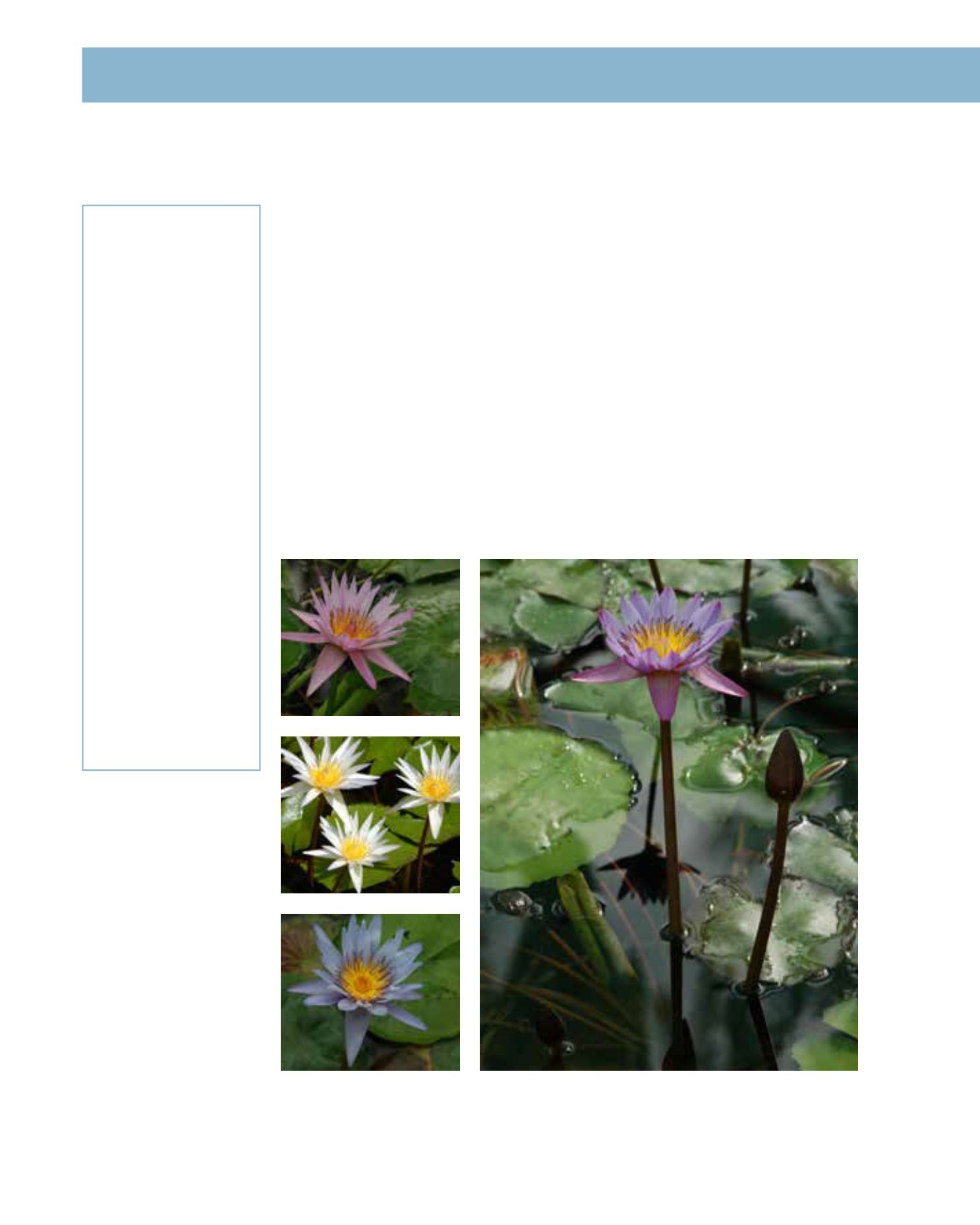

GENERAL
Origin
:
tropical
Vigour
:
fairly fast
growing
Humidity
:
semi-humid, very
humid, extremely
humid
Propagation :
direct sowing,
division
Maintenance :
high
CONDITIONS
Urban climate :
vulnerable
Dessication :
vulnerable
Stagnant water :
resistant
Salinity/ppm :
low (700 ppm)
Hardiness
:
0°C
SHAPE
Type
:
aquatic
Height
:
0.4 m
Spread
:
1 m
Foliage
:
evergreen
FLOWER
Colour
:
pastel white,
pastel pink,
pastel purple
Size
:
20 cm
Period
:
January -
December
Smell
:
sweet
FRUIT
Type of fruit :
capsule
Fruit size
:
10 cm
Toxicity
:
inedible
This other species of tropical Water Lily, native to Africa, is the Cape Blue Water Lily: it is closely
related to Nymphaea caerulea and the Blue Lotus, as well as Nymphaea alba, the White Lotus.
Similar in shape and appearance, the Cape Blue Water Lily is sky-blue in colour and the Blue
Lotus is a brighter blue. It is found growing abundantly in freshwater habitats in southern Africa.
N. capensis was introduced from its native South Africa to the USA, where many beautiful vari-
eties were bred, for example, the Star Water Lilies, including ‘Lilac Star’. The flowers have a spicy
perfume. Essentially, N. capensis has all the same attributes as N. caerulea: it is easily grown, but
prefers high acidity in the water. The success of this species in Arriyadh is therefore somewhat
dependent on this, but it has generally been as good as N. caerulea. It is considered hardy to a
winter minimum of –1 to 4°C. The Cape Blue Water Lily grows best in full sun to partial shade
and in relatively shallow water. All Water Lilies are heavy feeders: good, sieved garden loam is
recommended, an accumulation of humus at the bottom of the pond is sufficient and nutrients
should be added in the growing season. Maintenance of these plants is intensive: in very cold
climates, these Water Lilies may be killed if left outdoors during winter.
213
Nymphaea capensis,
Nymphaceae
Cape Blue Water Lily
















